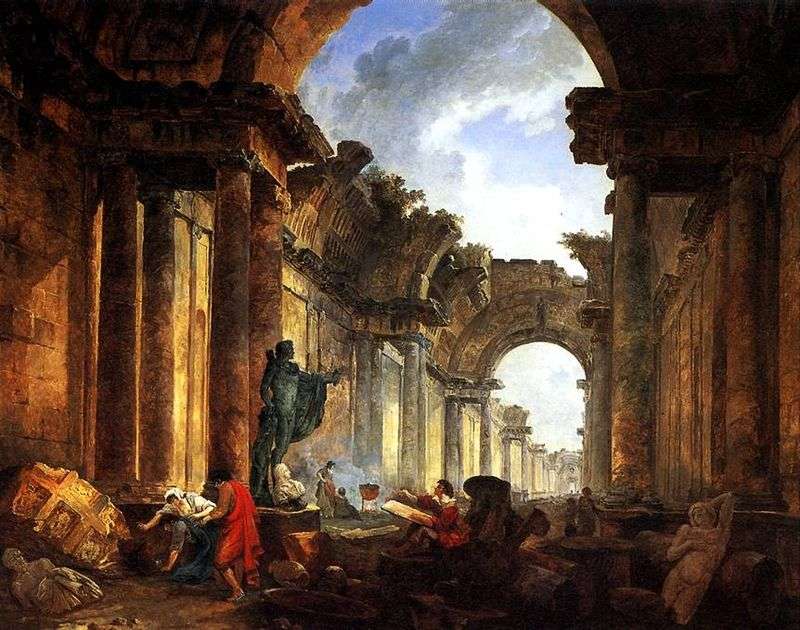
In the history of European art of the second half of the XVIII century. Hubert Robert came in as one of the artists most loved by contemporaries. “What an effect! What greatness! What nobleness!” – spoke about the paintings presented in one of the Paris Salons by Robert D. Diderot. The artist was born in Paris.
Almost ten years he studied and worked in Rome, where he met Fragonard and together with him wrote the views of Villa d’Este. But most of all in the Italian period, Robert was amazed by the creativity of Piranesi, his architectural fantasies, romantic ruins. Under the influence of Piranesi, the main themes in Robert’s works were the imaginary and really existing ruins of the ancient city. These works brought glory to the artist in Paris, but over time he began to turn to real species. “The Imaginary View of the Great Gallery in Ruins” is a typical work for Robert.
As in other similar paintings, the artist with special subtlety conveys the effects created by the air environment, his painting is distinguished by the subtlety of the manner in which the details are conveyed, which gave his paintings a romantic character. Other famous works are “The Port of Rome”. 1766. Museum of the School of Fine Arts, Paris; “Ruins with an obelisk in the back”. 1775. The Pushkin Museum. A. S. Pushkin, Moscow; “Fire in opera.” 1781. Museum of Carnavalet, Paris; “The Bridge of Garda”. 1787. The Louvre, Paris.
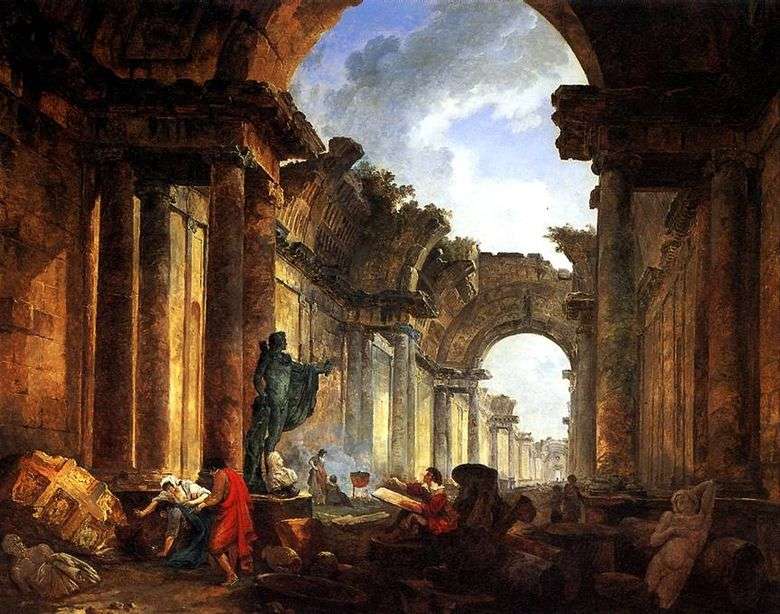 Vista imaginaria de la Gran Galería en ruinas – Hubert Robert
Vista imaginaria de la Gran Galería en ruinas – Hubert Robert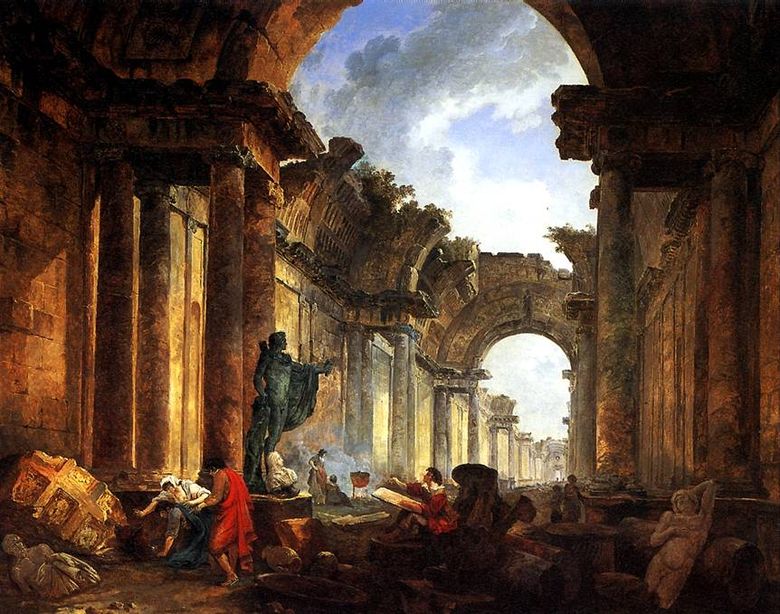 La vue imaginaire de la grande galerie en ruines – Hubert Robert
La vue imaginaire de la grande galerie en ruines – Hubert Robert Ruins of the Temple of Neptune in Paestum by Giovanni Piranesi
Ruins of the Temple of Neptune in Paestum by Giovanni Piranesi View of Naples with Vesuvius by Claude Vernet
View of Naples with Vesuvius by Claude Vernet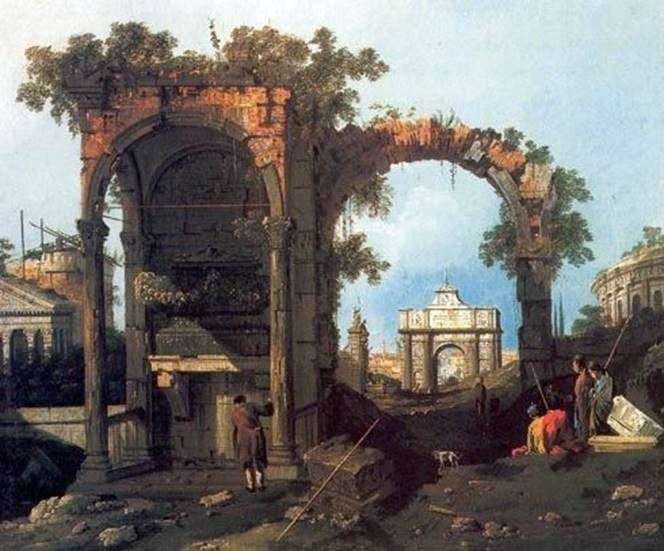 Capriccio with classical ruins by Antonio Canaletto
Capriccio with classical ruins by Antonio Canaletto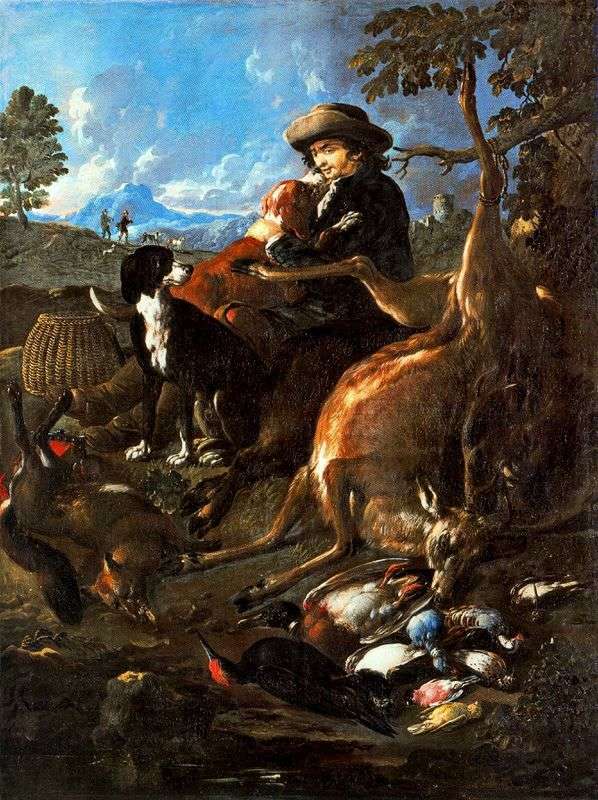 Hunter by Philip Peter Roos
Hunter by Philip Peter Roos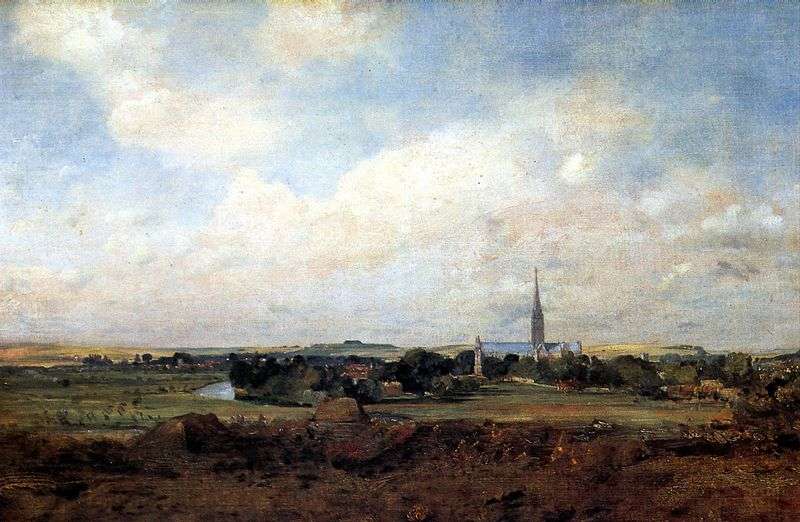 View of Salisbury by John Constable
View of Salisbury by John Constable Wooden bridge by Eugene Izabe
Wooden bridge by Eugene Izabe